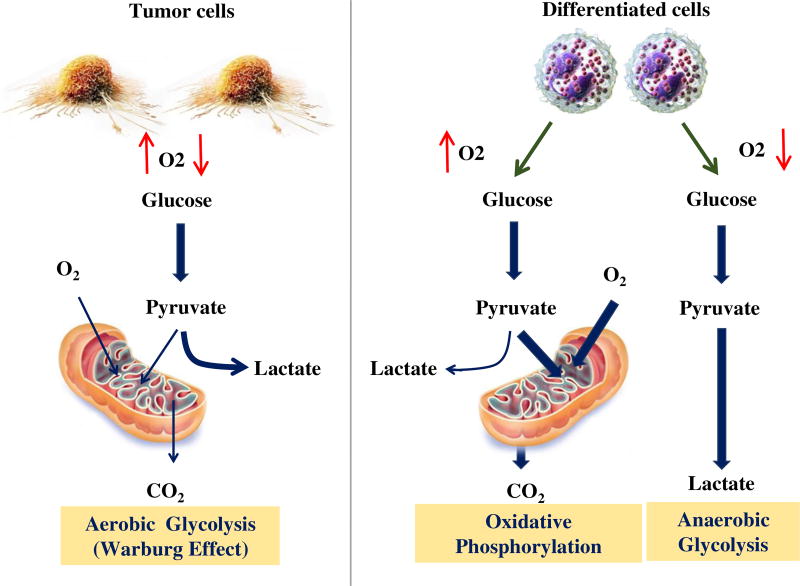Fig. 2.
The Warburg effect or aerobic glycolysis in tumor cells. Normal differentiated cells generate energy through glycolysis (at low oxygen levels) and mitochondrial oxidative phosphorylation (at high oxygen levels). However, rapidly proliferating tumor cells generate energy mainly through glycolysis, followed by lactic acid fermentation in the cytosol. This metabolic change is observed at both low and high oxygen levels. Pyruvate kinase plays a leading role in the establishment and maintenance of aerobic glycolysis adaptation

